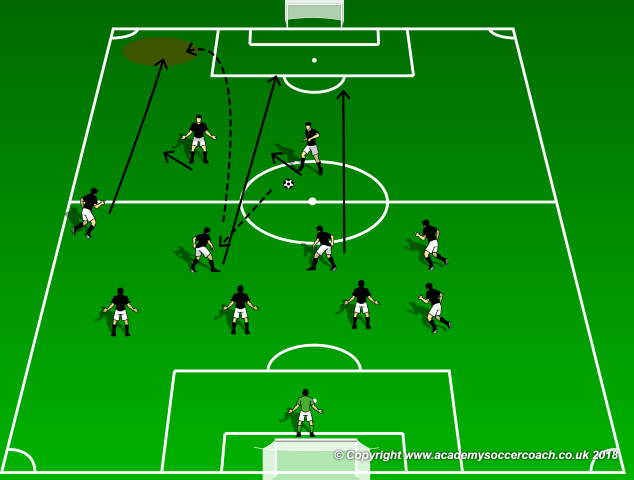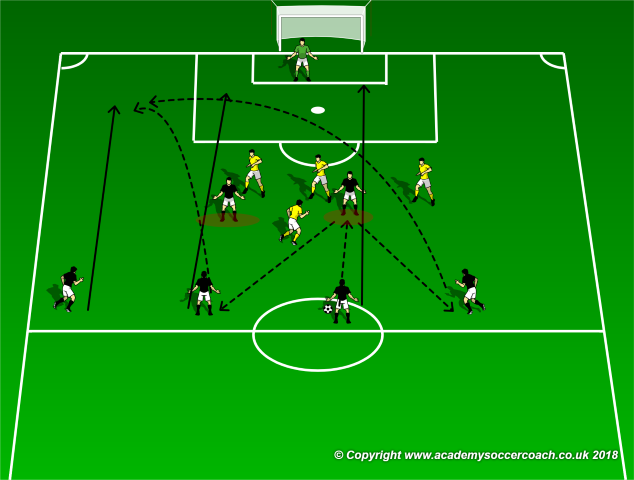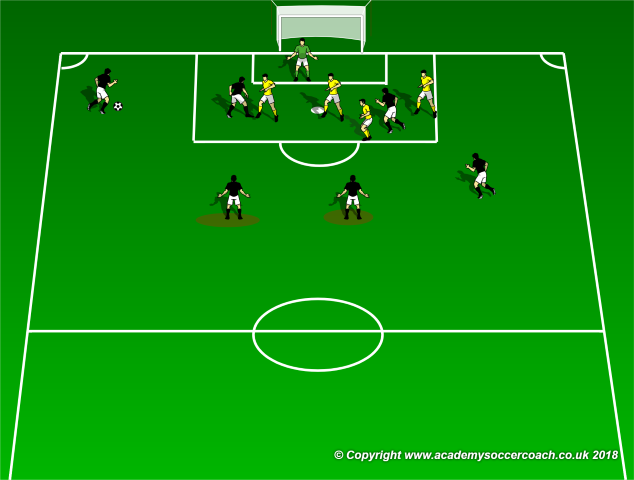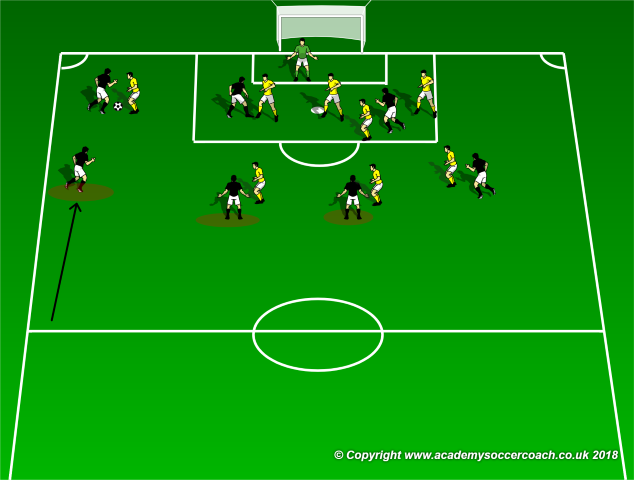By Mike Smith
I have a player on my high school team who eats breathes and sleeps soccer ( Yes, just one. We are a small school, I wish I had more.). He loves not only playing the game, but also studying the game. A few years ago, actually when he was a junior varsity player, I asked him to drop into midfield a bit from forward in a 4-4-2 and he yelled " Yes! Like a false 9? ". I chuckled and replied " Exactly!". My understanding is that the center forward in soccer used to commonly wear the number 9 and when this player didn't actually play in the center forward role, they were deemed the " false 9 ". While a 4-4-2 doesn't usually designate one central forward ( with the possible exception of a high / low set up ) I have had success dropping two forwards into mid field to cover wing and midfield players who were not only my best midfielders but also my best scorers. We are entering the regional tournament this week and may use this tactic, which the afore mentioned player always responds " Ohhhh, so two false 9s?" Here is how it works:

If your team likes to play to the wings and also uses your forwards for possession in front of the defense, dropping them both into midfield as false 9s can create a ton of dangerous situatuions for the opposing side. With out cluttering up the diagram by adding defenders, just the common set up shown creates this dilema : do the central defenders step into the midfield to cover the forwards or retreat back with the wing? IF the midfielders mark the midfielders coming in from the attack and the central defenders retreat, there are 4 players covering 2 - which is great if those two get the ball but not the best scenario for an unchallenged server as a couple players are also open somewhere - perhaps the two false 9s who can now run free into the attack. To practice using two false 9s, try this:

Set Up
6 attackers take on 3 back line defenders and one defensive mid. This is done to provide for an open service. As shown above, 4 attackers start on the half line and must serve the ball into one of the forwards who then, under pressure from the defensive mid, drops the ball back to a midfielder. The midfielder sends the ball up for the wide service and then the two center mids join in the attack while the forwards ( shaded in red ) "drop" or simply hold to join the second attacking wave or win any clearances or second balls resulting from the initial attack / service.

As the diagram above shows, the two false 9s now have their run of the space at the top of the box. IF the defenders stay up with the false 9s, obviously the service will go into the mids crashing the box. Even placing additional defenders in ( which is the natural progression of this drill ) doesn't change that much ( below ):

With the addition of one supporting run from the attacking sides defender, it takes 8 defensive players to mark up everything and with good accurate passing and combinations, the two false 9s have a ton of space at the top of the box to exploit. To practice this, set up as shown in the first diagram and add defenders and the additional attacker until the drill is half field 8 v 7.
Coaching Points
Focus is on either quick attacking as the false 9s drop out and the midfielders run in, or, creating combinations with the false 9s in the space their initial drop created. In reality, this motion will find defending mids inside the box and at least one of the false 9s will be totally open as the defensive mids are caught either watching or chasing the ball. The coach should really challenge the attacking side to recognize these situations and make the most of them.
By Mike Smith
Currently the Head Coach for University Heights Academy Boys Soccer in Hopkinsville, KY , Mike is in his 14th year as a high school head coach with 23 years coaching experience overall and 34 year as a student and fan of the game. He holds a USSF D License.


